Wednesday was a free day in the middle of the printing conference. The organizers had arranged whale watch reservations for those participants who wanted them, including of course us. So at eight o’clock we were walking into downtown Bar Harbor to the pier, carrying all the warm clothing we had with us.
Pulling out of the harbor we passed, of course, lots of lobster boats.
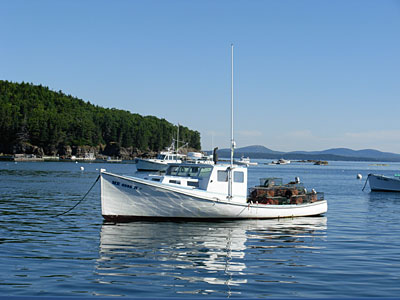
Oh! That’s a better picture than I realized. Want it for a calendar or screen saver?
The sea was calm but with a long swell. The boat would throw a big curtain of spray off the sides as it cut through the crest of each swell.

We headed out to sea for most of an hour with occasional sightings of porpoises and seals. Finslly we were in the general area where it was reasonable to expect to see whales, where the contour of the seabed and the currents combined to push nutrient-laden water up from the bottom to the surface where sunlight and the nutrients would let the plant plankton grow, the animal plankton eat it, and on up the food chain to the whales. The naturalist – guide – narrator exhorted us once more to keep an eye out all around because whales could be anywhere around us, and, thar she blows, I saw a spout at ten o’clock. There were several other spouts ahead. This isn’t a photo of that spout, but you get the idea:
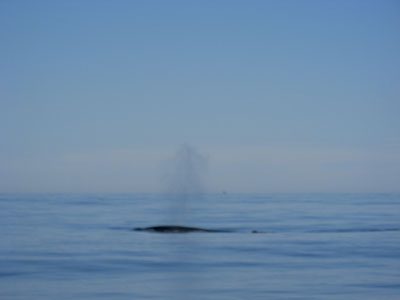
When we got closer to where there were several spouts, we saw something like this:
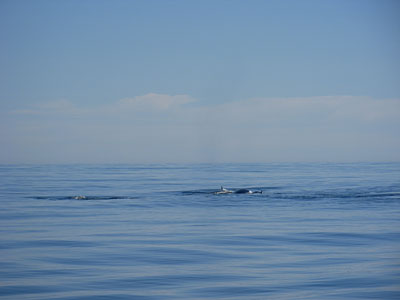
That’s at least three finback whales, the second longest kind of whale, the second largest kind of animal ever to live on this planet. Here’s one closer up:
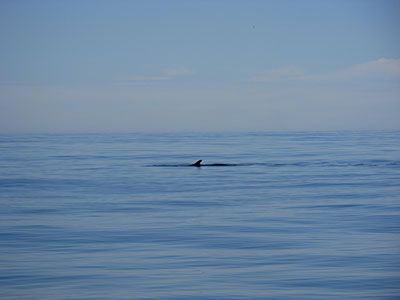
What happens is that the whales swim on the surface for a while, breathing (that is, spouting) several times each, and then dive for food. They can hold their breath for up to an hour if they need to, but more likely they will stay underwater for five to ten minutes and then come up , well, wherever they happen to come up. Everyone has to be on the alert again for a re-sighting. After we had watched the finbacks for a while two humpback whales showed up. The finbacks dive by sort of raising the center of their bodies and sinking down. The humpbacks have more blubber, so they’re more buoyant. They need an extra push with the tail to dive. They’re the ones that give you a more impressive view, a good fluke shot.
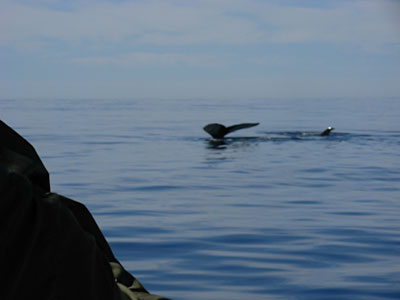
These two humpbacks were a female named Siphon and her calf of the year. The naturalists recognize the whales by the patterns on the tail, as individual as fingerprints.
Being out there on the ocean with whales all around you is much more impressive than the picture indicates. You have to be watching all around, or at least all there is on your side of the boat, all the time. Anything, even hundreds of yards away, stands out against the uniformity of the water, so it seems bigger there than it looks in my pictures.
On the way back we stopped to look at an island that has a large seal colony. There were a lot of seals hauled out on the rocky shore, looking like more rocks.
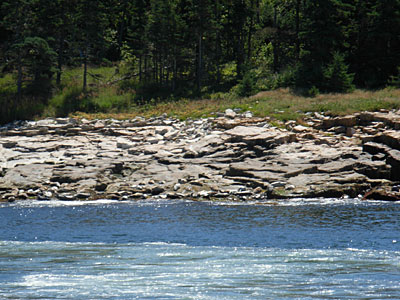
Got that? See the seals? They’re there. Here’s a detail of that picture.
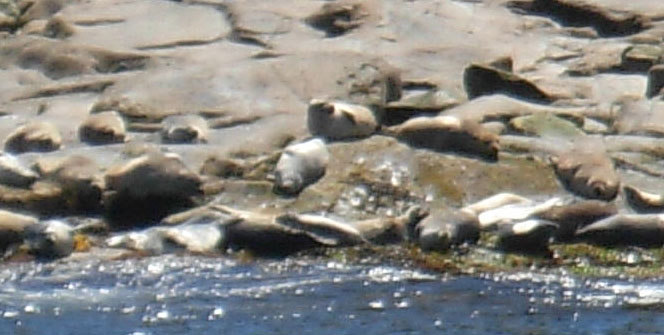
Looks like you had a good time on the Friendship V (5)
I liked your site, you did a good job with it! Just thought it was cool.
Also what was probably cooler, is the fact I was probably on the boat that day as a 6 year Deckhand/Crew member and now Captain.
Jesse Raikes. (Bar Harbor Whale Watch Company)
1800-whales-4